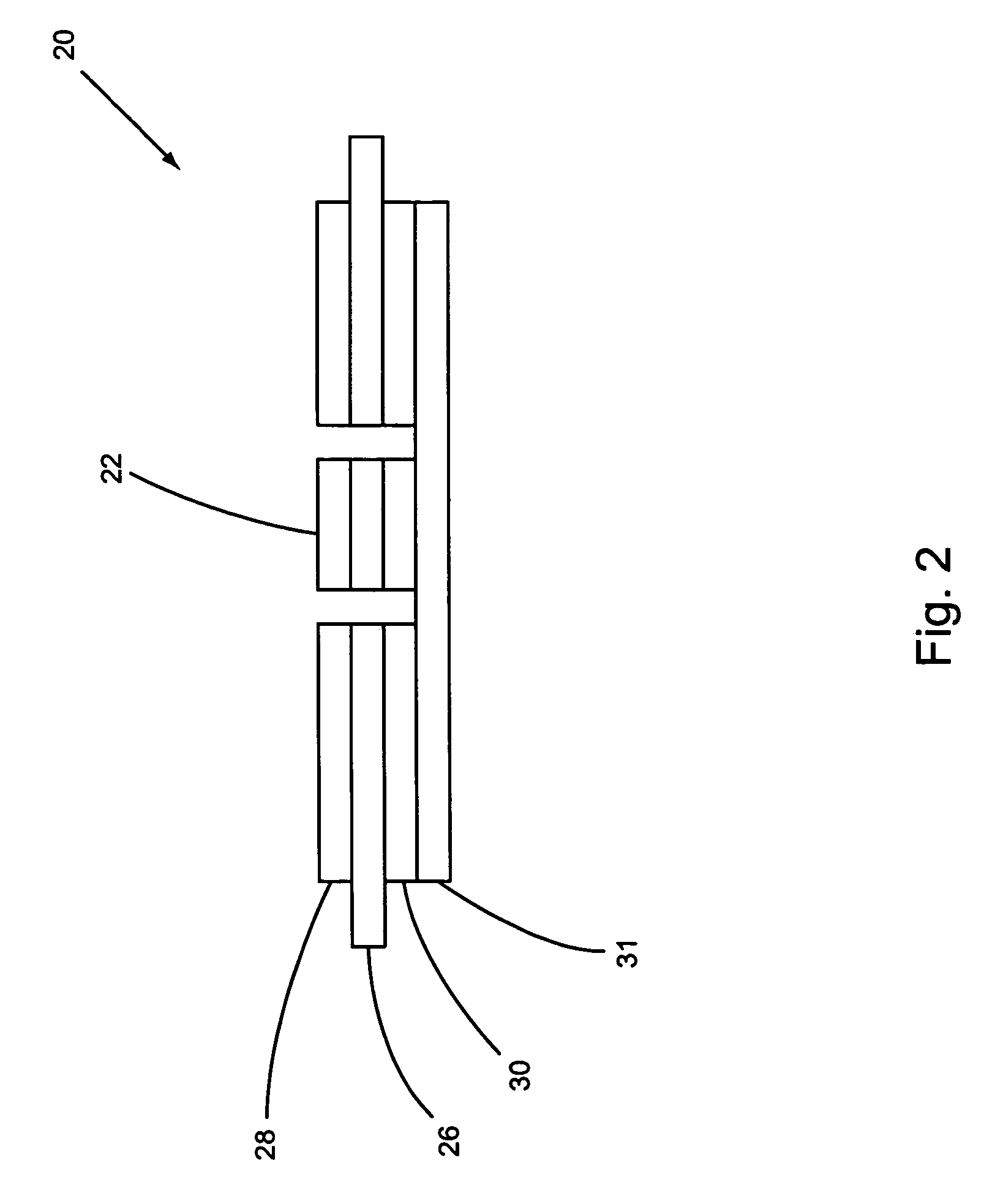Thermal wristband/cinch with inboard label assembly business form and method
a technology of inboard label and wristband, which is applied in the direction of identification means, instruments, and people, etc., can solve the problems of not being able to easily associate people desperately in need of health care with their belongings, making handling any “standard” form imminently more difficult, and not having a convenient way to associate people with their belongings. , to achieve the effect of convenient attachment, convenient separation from the carrier, and convenient attachment to a person
- Summary
- Abstract
- Description
- Claims
- Application Information
AI Technical Summary
Benefits of technology
Problems solved by technology
Method used
Image
Examples
Embodiment Construction
[0054]As shown in FIGS. 1–3, the first embodiment of the business form 20 of the parent invention generally includes a wristband / label assembly 22 die cut into a carrier 24 making an overall size of preferably approximately three and a half inches by seventeen inches, (3½″×17″). Generally, the business form 20 is assembled with a three web construction, with a poly laminated paper center web 26 sandwiched between a pair 28, 30 of thin film poly, transparent webs, and this is then dry adhered to a carrier web 31. The poly coated paper web 26 is dry adhered to the carrier web 31 so that it may be separated therefrom along its die cut to remove the wristband / label assembly 22 from the carrier 24. At an end of the form 20, an adhesive 32 is applied to the single end 34 of the wristband portion 36 of the wristband / label assembly 22. A separate patch 40, preferably made of paper with a release coating, covers the adhesive 32, with the webs die cut so that a portion of the patch 40 coverin...
PUM
 Login to View More
Login to View More Abstract
Description
Claims
Application Information
 Login to View More
Login to View More - R&D
- Intellectual Property
- Life Sciences
- Materials
- Tech Scout
- Unparalleled Data Quality
- Higher Quality Content
- 60% Fewer Hallucinations
Browse by: Latest US Patents, China's latest patents, Technical Efficacy Thesaurus, Application Domain, Technology Topic, Popular Technical Reports.
© 2025 PatSnap. All rights reserved.Legal|Privacy policy|Modern Slavery Act Transparency Statement|Sitemap|About US| Contact US: help@patsnap.com



